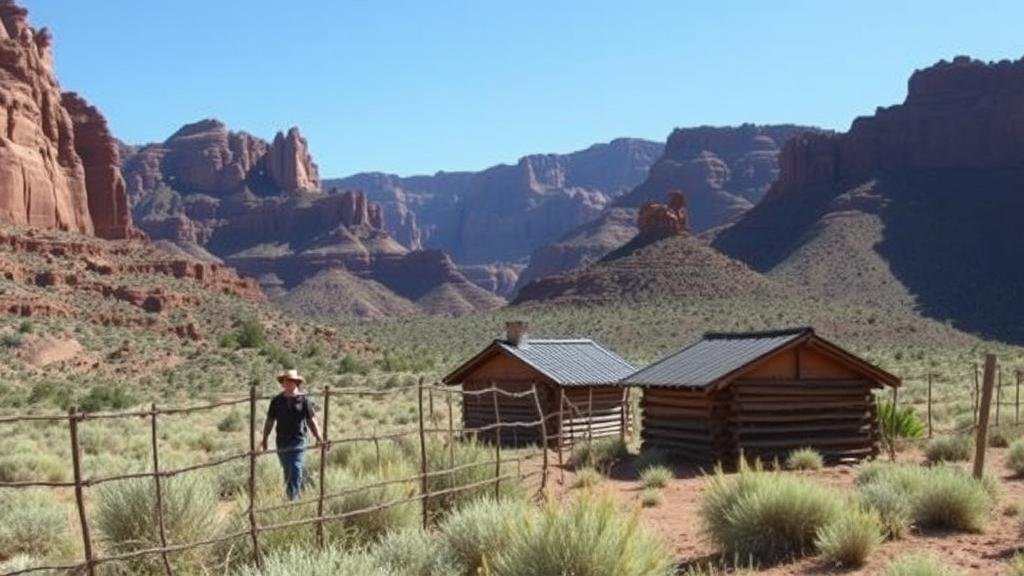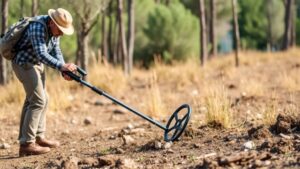Detecting for Hidden Outlaw Money in Remote Canyon Settlements
Detecting for Hidden Outlaw Money in Remote Canyon Settlements
Detecting outlaw money in remote canyon settlements presents significant challenges for law enforcement and financial investigators. These concealed areas offer prime locations for illicit activities due to their geographical isolation, which is often exploited by criminals. Understanding how to locate these hidden resources requires an examination of various techniques, technologies, and methodologies that can aid in the detection and analysis of financial misconduct.
The Landscape of Remote Canyon Settlements
Remote canyon settlements, often nestled in rugged terrain and dense wilderness, provide ideal cover for nefarious activities. e locations can vary significantly in their accessibility and infrastructure, impacting how investigators can approach the detection of outlaw money.
In the past, such settlements were often associated with anti-government groups, drug trafficking operations, or the illegal trafficking of goods. But, the digital age has transformed the landscape of financial crime, introducing cryptocurrency and sophisticated laundering techniques that can obscure transactions. According to a report from the United Nations Office on Drugs and Crime (UNODC), an estimated $870 billion is laundered globally each year, highlighting the pressing need for more effective detection strategies.
Common Indicators of Hidden Outlaw Money
Detecting hidden outlaw money frequently involves identifying specific indicators that signal illicit financial activity. Some common markers include:
- Frequent cash transactions in remote areas with little documentation
- Unusual spikes in transaction volumes detected through financial monitoring systems
- Evasion tactics such as the use of fictitious companies or layered transactions
- Use of cryptocurrency platforms that prioritize anonymity
For example, in the case of a drug trafficking operation in the Appalachian region of the United States, investigators discovered a complex web of transactions obscured by multiple shell companies that facilitated the laundering of proceeds through various means. Identifying initial red flags–such as cash-intensive businesses in remote areas–helped law enforcement trace back to the source of the outlaw money.
Technological Approaches to Detection
Technology plays a crucial role in uncovering hidden outlaw money in remote canyon settlements. Law enforcement agencies now employ various tools and methodologies, including:
- Geospatial analysis software to map suspicious activity in relation to settlement locations
- Data mining and predictive analytics to identify patterns indicative of money laundering
- Drones for surveillance of hard-to-reach areas where physical monitoring may be inadequate
A notable example of this technology in action occurred during a multi-agency narcotics investigation in 2021, where drones equipped with thermal imaging were used to locate hidden grow operations in remote canyons. drones detected heat patterns from illegal cannabis cultivation, leading to the seizure of over $10 million in illicit revenue.
Collaboration and Information Sharing
Another vital aspect of detecting outlaw money is the collaboration between different law enforcement agencies and financial institutions. By pooling resources and intelligence, agencies can enhance their ability to identify and track illicit financial flows.
For example, the Financial Crimes Enforcement Network (FinCEN) in the U.S. encourages financial institutions to report any separate transactions that appear suspicious. This collaborative framework is essential for creating a comprehensive understanding of potential outlaw financial networks operating in remote settlements.
Legal and Ethical Considerations
While the pursuit of detecting hidden outlaw money is essential for maintaining law and order, it is equally important to navigate the legal and ethical landscape. Investigative practices must adhere to established legal frameworks, with an emphasis on civil liberties and due process.
For example, unwarranted surveillance and data collection practices could lead to violations of privacy rights. It is crucial for investigators to operate within the confines of the law, ensuring that evidence gathered is admissible and that the rights of individuals are respected.
Actionable Insights for Future Investigations
Successful detection of outlaw money in remote canyon settlements can be significantly improved through a combination of strategic practices:
- Enhance training for investigators in the use of new technologies and analytical methods
- Establish ongoing partnerships between local, state, and federal agencies for information sharing
- Use community outreach programs to educate locals on the signs of illicit financial activity
By focusing on these areas, agencies can proactively strengthen their efforts in detecting hidden outlaw money, ultimately disrupting criminal enterprises operating in isolated environments.



